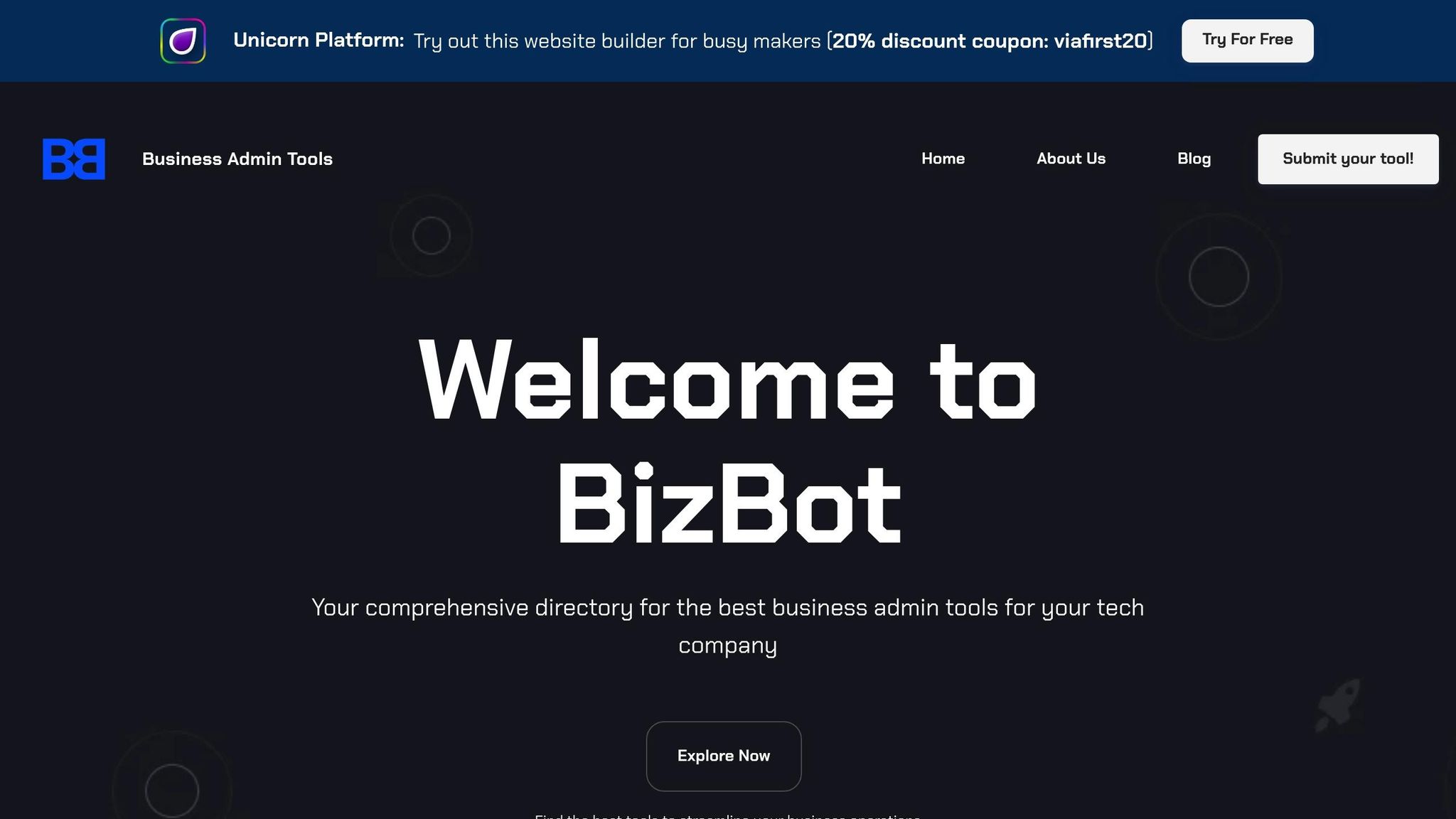Metadata management is the backbone of any successful Digital Asset Management (DAM) system. It ensures digital files are organized, searchable, and compliant, saving teams time and reducing operational inefficiencies. Here's what you need to know:
- Metadata Basics: Metadata describes and categorizes assets. It includes three types:
- Descriptive (e.g., titles, keywords)
- Administrative (e.g., usage rights, creator info)
- Structural (e.g., file type, relationships)
- Key Benefits: Faster asset retrieval, improved compliance, and better collaboration across teams.
- Common Challenges: Scalability, consistency, integration with other systems, and user adoption.
- Best Practices:
- Build a clear taxonomy and metadata schema.
- Use controlled vocabularies to standardize terms.
- Automate tagging with AI tools to save time.
- Regularly audit and refine metadata frameworks.
- Advanced Techniques:
- Link metadata with systems like CMS or PIM for seamless workflows.
- Implement role-based permissions and approval workflows.
- Use hierarchical schemas for large asset libraries.
A structured metadata strategy transforms DAM systems into efficient tools for managing digital assets effectively. The right mix of automation, governance, and stakeholder collaboration ensures long-term success.
Effective Digital Asset Organization and Metadata Strategy
Setting Up Metadata Frameworks
Creating a solid metadata framework is all about careful planning and foresight. This framework becomes the backbone of how your organization organizes, describes, and manages digital assets - saving time and reducing costs in the long run. Let’s take a closer look at how to build this foundation with a well-thought-out taxonomy and metadata schema.
Creating Taxonomy and Metadata Schema
The first step in setting up your metadata framework is developing a taxonomy and metadata schema tailored to your organization’s needs. Think of taxonomy as the structure that organizes your assets into categories, while the schema defines the specific fields and data types used to describe each asset.
Start by analyzing your current asset types and grouping them into broad categories. For example, a marketing agency might organize assets by campaigns, clients, and content types. Meanwhile, a manufacturing company might focus on product lines, documentation, and compliance categories. Once you’ve identified these broad groups, break them down into subcategories that reflect how the assets are actually used.
When designing the metadata schema, prioritize fields that truly enhance asset discovery and management. Key fields often include asset title, creator, creation date, usage rights, and keywords. Research from 2025 shows that organizations with strong metadata strategies experience 40% faster asset retrieval times and a 30% reduction in duplicate assets compared to those without structured frameworks.
Using controlled vocabularies is another game-changer. Instead of allowing free-text input for fields like “asset type” or “campaign status,” provide standardized dropdown options. This avoids confusion from similar terms like “product launch” and “new release,” which could complicate searches.
Conditional fields can also streamline the process. For instance, selecting “video” as an asset type could trigger additional fields for duration, resolution, or audio specifications. This keeps the interface clean while ensuring all necessary details are captured.
Once the schema is in place, the next step is collaborating with stakeholders to ensure it meets practical needs.
Working with Stakeholders on Metadata Design
Stakeholder input is critical to creating a metadata framework that works for everyone. Bring together representatives from departments like marketing, creative, legal, IT, and any others that frequently handle digital assets.
Workshops or structured interviews can help uncover how each team searches for and uses assets. For example, marketing teams might prioritize campaign names and approval statuses, while legal teams focus on usage rights and expiration dates. Creative teams often search by visual style or color palette, while sales teams need quick access to the latest product images.
Mapping user journeys can highlight common pain points in asset discovery, allowing you to adjust the taxonomy accordingly. A survey by Brandfolder revealed that 68% of DAM users cite "inconsistent metadata" as a major hurdle, underscoring the importance of stakeholder collaboration.
Document every decision made during the design process and share it with all stakeholders. This ensures consistency, especially as new team members join. Regular reviews based on real-world usage also help refine the framework over time.
Once the framework is designed, maintaining its quality requires a governance plan.
Building a Metadata Governance Plan
Even the best metadata frameworks won’t last without proper governance. A metadata governance plan defines roles, responsibilities, and processes to ensure data quality and consistency over time.
Assign specific roles such as metadata stewards, content owners, and IT administrators. Metadata stewards are responsible for maintaining the integrity of the schema and making decisions about updates. Content owners ensure the accuracy of asset-specific details in their areas. IT administrators manage technical implementation and system integrations.
Establish clear policies for creating and updating metadata. Identify which fields are mandatory, set keyword usage standards, and create workflows for approving schema changes. Regular audits can catch inconsistencies and outdated information before they become larger issues.
Training is another key element. Develop onboarding materials with real-world examples from your organization to help users understand the reasoning behind taxonomy choices.
To keep the framework effective, schedule regular review cycles - quarterly, if possible. These reviews should evaluate whether the schema is still meeting your organization’s needs. As business priorities evolve, you may need to remove outdated fields, add new categories for emerging asset types, or refine controlled vocabularies based on usage patterns.
Lastly, ensure your governance plan accounts for integration with other systems. If your DAM needs to sync with Product Information Management (PIM) or Content Management Systems (CMS), establish protocols for data synchronization and conflict resolution. This prevents the kind of integration issues that can derail enterprise DAM systems.
Best Practices for Metadata Optimization
Optimizing metadata isn't a "set it and forget it" task. It demands ongoing attention to ensure it remains efficient, accurate, and user-friendly. Striking a balance between simplicity and functionality is key, and using technology effectively can lighten the manual workload.
Keeping Metadata Schema Simple and Usable
One common pitfall for organizations is overcomplicating their metadata schemas. A 2024 survey by DAM News revealed that 68% of enterprises see metadata complexity as a major obstacle to adopting Digital Asset Management (DAM) systems. The takeaway? Simplicity is crucial.
Focus on metadata fields that align with how users actually search for and utilize assets. For instance, if your marketing team never filters by "camera aperture settings" but frequently searches by "campaign status", prioritize the latter. Every unnecessary field adds clutter and complicates searches - stick to the essentials that users rely on consistently.
Required fields should be limited to about five to seven core elements, such as asset title, type, creation date, and usage rights. Beyond these, make other fields optional so users can add details when necessary, without creating barriers for quick uploads.
To keep things organized, group related fields using conditional logic based on workflows. This ensures a clean interface while still capturing comprehensive metadata when specific conditions are met.
Regular feedback from users can reveal which fields are being ignored or misused. If a field remains empty or contains inconsistent data, it’s likely too complex or unimportant. Instead of forcing adoption through training, consider removing it altogether.
Using Controlled Vocabularies
Controlled vocabularies are a game-changer for metadata consistency. By replacing free-form tagging with standardized dropdown menus, you can dramatically improve search accuracy and reduce duplicate assets.
These standardized vocabularies ensure consistency during asset uploads. Without them, teams might use different terms for the same concept, making it harder to locate assets and increasing the risk of duplicates.
Start with critical categorization fields like asset type, department, campaign name, or approval status. Build your vocabularies by analyzing existing tags and identifying the most commonly used terms. Then, consolidate variations into clear, standardized options.
For better usability, maintain separate vocabularies tailored to specific contexts. For example, a "campaign type" vocabulary might include terms like "brand awareness", "product launch", and "seasonal promotion", while an "asset format" vocabulary could list options like "JPEG", "PNG", "MP4", and "PDF." This targeted approach keeps dropdown menus relevant and manageable.
To keep vocabularies up to date, schedule regular reviews - quarterly works well. Stakeholders can suggest new terms or retire outdated ones as business needs evolve. Documenting the reasoning behind vocabulary decisions ensures consistency over time.
When paired with automated tagging systems, controlled vocabularies become even more powerful. AI tools can be trained to recognize your standardized terms, ensuring that automatically applied metadata aligns with your established vocabulary.
Automating Metadata Tagging and Updates
Manual metadata entry is a tedious process prone to errors. Automation tools can handle repetitive tagging tasks, ensuring consistency and saving time. Companies that use automated metadata tagging report a 40% reduction in time spent retrieving assets and a 30% decrease in duplicate asset creation.
AI-powered content analysis takes automation to the next level. These tools can analyze images to identify objects, colors, and even composition details, then apply relevant tags from your controlled vocabularies. For videos, they can extract scene data, detect text overlays, and tag key visual elements.
File-based automation captures technical metadata directly from asset properties. For example, upload timestamps can populate creation dates, file names can be parsed for campaign codes, and embedded EXIF data can provide camera settings and location details. This eliminates the need for manual entry of factual information, ensuring accuracy.
Automated workflows can also keep metadata updated as assets move through various stages. For instance, when a designer uploads a draft logo, the system might tag it as "draft." Once approved, the status could automatically update to "approved", along with the approval date. This ensures lifecycle information stays accurate without requiring manual intervention.
Integration with other business tools adds another layer of efficiency. For example, when a project management system marks a campaign as complete, connected DAM systems can automatically update related assets with completion dates and archive statuses. This synchronization ensures metadata reflects the current state of the business.
To maintain quality control, set up exception handling for automated processes. Flag assets with low tagging confidence for manual review, and create alerts for conflicts between automated updates and existing metadata. This hybrid approach combines the speed of automation with the judgment of human oversight.
Regularly monitor the accuracy of automated tagging. Pay attention to tags that frequently get corrected manually and refine the automation rules accordingly. Over time, these adjustments will make your automated systems more precise and reliable.
sbb-itb-d1a6c90
Advanced Metadata Management Techniques
As your asset library and business systems grow, keeping metadata accurate and functional becomes increasingly important. These advanced strategies help organizations handle large-scale asset libraries while ensuring data stays reliable and interconnected across platforms.
Connecting Metadata with Other Business Systems
Linking your DAM (Digital Asset Management) system with tools like project management, PIM (Product Information Management), and ERP (Enterprise Resource Planning) systems creates a unified flow of asset data. For instance, a global retailer successfully connected its DAM with a PIM system, enabling automatic updates of product images and descriptions across e-commerce platforms. This eliminated manual updates and ensured that marketing materials stayed consistent with product listings.
To achieve this, use robust API connections and carefully map metadata fields to synchronize information and avoid duplication. For example, a media company integrated its DAM metadata with project management software, allowing teams to access real-time updates on assets, which improved collaboration. Start by connecting your most critical systems - such as campaign management tools - before expanding to platforms like CRM (Customer Relationship Management) or CMS (Content Management System). This approach creates a seamless digital workflow and paves the way for secure metadata management.
Setting Up Permissions and Approval Workflows
Role-based permissions are key to maintaining metadata accuracy and controlling edits. Assign specific roles - like admin, editor, and viewer - to ensure only authorized users can make changes. For example, marketing teams might edit campaign asset metadata, while legal teams approve usage rights, ensuring updates happen through the right channels.
For more sensitive metadata updates, implement multi-step approval workflows. Changes to usage rights or brand guidelines, for instance, can trigger automated notifications for designated reviewers to approve before updates go live. Features like audit trails and automated notifications help track who made changes and when, ensuring accountability. In highly regulated industries, additional safeguards - like dual approval for specific asset types or conditional permissions based on asset status - can protect compliance without hindering flexibility during development.
These workflows naturally complement strategies for handling extensive asset collections.
Managing Metadata for Large Asset Libraries
As asset libraries grow, hierarchical metadata schemas provide a scalable solution. This structure improves searchability and makes asset retrieval more efficient compared to flat tagging systems.
To keep metadata consistent, use batch editing tools and conduct regular audits, especially when brand standards evolve. Companies with strong metadata practices have reported up to a 40% reduction in time spent searching for assets and a 30% drop in duplicated assets.
Cloud-based storage solutions can also support performance as collections expand. On-premise systems often struggle with the demands of complex metadata searches, whereas cloud platforms handle these workloads more effectively. Additionally, AI-powered tools simplify metadata tagging by applying consistent labels based on visual content, file properties, and predefined rules. Enterprises managing large libraries have seen up to a 70% reduction in manual entry time thanks to automated tagging.
Finally, develop an archival strategy for older assets to keep your active collection efficient and easy to navigate.
Comparing Metadata Management Approaches
Picking the right metadata management strategy is essential for ensuring your DAM system stays efficient and effective over time. Each approach comes with its own set of trade-offs, impacting how your team works daily and how well the system scales. Understanding these differences can help you build a solution that aligns with your organization's unique needs.
Manual vs. Automated Metadata Management
With manual metadata management, you have complete control over tagging, allowing for detailed and nuanced classifications that automated systems might overlook. However, this method is labor-intensive and becomes harder to sustain as your asset library grows.
In contrast, automated metadata management leverages AI to tag assets quickly and consistently. For instance, a 2024 survey revealed that 67% of enterprises using automated tagging saw at least a 30% improvement in how easily assets could be found. Many organizations now use a hybrid approach - combining automated bulk tagging with expert manual refinement. This strategy can cut manual effort by up to 80% while maintaining accuracy and scalability.
| Approach | Advantages | Disadvantages | Best Use Cases |
|---|---|---|---|
| Manual Metadata | Rich in context, flexible | Time-intensive, prone to inconsistency | Small teams, unique or niche assets |
| Automated Metadata | Fast, consistent, scalable | Lacks nuance, requires setup | Large libraries, repetitive assets |
Next, let’s explore how governance models influence metadata practices.
Centralized vs. Decentralized Metadata Governance
A centralized governance model puts a dedicated team or department in charge of metadata standards. This setup ensures consistency and compliance across the organization. For example, organizations with centralized governance have reported 25% fewer compliance issues compared to those using decentralized models. However, centralized control can slow down updates, as changes often require formal approval.
On the other hand, decentralized governance allows individual teams to manage metadata independently. While this approach improves agility, it can lead to inconsistencies. For example, different departments might tag the same asset differently, making cross-department searches more complicated.
To address these challenges, many organizations are adopting hybrid governance models. These combine the consistency of centralized standards with the flexibility of decentralized input. Core metadata fields - like usage rights or brand guidelines - remain centrally managed, while teams are allowed to add specialized tags within approved frameworks.
Now, let’s look at how the complexity of your metadata schema can impact user adoption and system performance.
Simple vs. Complex Metadata Schema
The structure of your metadata schema plays a big role in how easily it’s adopted and how effective your DAM system becomes. A simple schema focuses on essential fields that are easy for most users to understand and apply. Organizations with simpler schemas report a 40% higher user adoption rate compared to those with more complicated designs. This approach is especially effective for teams with straightforward asset needs or those just starting to implement metadata. Common fields might include asset type, creation date, department, and usage rights.
For larger organizations with more complex needs, a detailed schema may be necessary. Enterprises managing diverse content types, multiple brands, or advanced search requirements benefit from metadata that supports robust filtering, automated workflows, and integrations with other systems. However, overly complex schemas can overwhelm users and reduce tagging accuracy. The key is to strike a balance - tailoring the schema to your organization’s size, asset diversity, and user expertise.
Conclusion
Managing metadata effectively transforms your Digital Asset Management (DAM) system into a powerful tool that enhances organizational efficiency. The strategies discussed here - from developing solid frameworks to selecting the right governance methods - work together to keep your digital assets accessible, compliant, and valuable for the long haul.
Key Takeaways for Metadata Management Success
Planning is critical: A well-thought-out metadata strategy saves you from costly restructuring later and scales alongside your business. Companies that invest time in planning upfront often achieve better results than those that approach metadata management reactively.
Collaboration ensures accuracy and adoption: Cross-functional teams play a crucial role in creating practical metadata schemas. Regular reviews and clearly defined roles keep everyone aligned and engaged.
Continuous improvement keeps systems relevant: As your business evolves and new asset types emerge, refining taxonomies based on how they’re actually used ensures your DAM system stays effective.
The numbers back this up: organizations with well-implemented DAM systems report up to a 30% reduction in the time spent searching for assets. For example, a global marketing team that standardized its metadata schema and automated tagging saw a 40% drop in asset search time and faster campaign turnarounds.
Consistency is key: Whether your approach is manual or automated, centralized or decentralized, simplicity or complexity, consistent application across the organization is what matters most. Tools like controlled vocabularies, defined approval workflows, and regular training help maintain this consistency as your team and asset library expand.
By following these principles, your metadata strategy can remain both effective and adaptable.
How BizBot Can Support DAM Metadata Management

BizBot complements these strategies by offering tools that streamline the processes surrounding DAM systems. Managing subscriptions, budgets, and workflows is essential for a robust DAM setup.
With BizBot's subscription management tools, you can optimize expenses for your DAM system and related software licenses, ensuring you maximize the value of your technology investments. Additionally, BizBot’s digital CFO services help growing businesses budget effectively for both implementing a DAM system and managing metadata over time.
For small business owners and growing companies, BizBot provides straightforward solutions to support your digital asset management efforts. Centralizing your business tools alongside your DAM strategy creates a unified system for managing both your digital assets and the processes that support them.
FAQs
How can organizations maintain an effective metadata framework as their digital asset library expands?
To keep your metadata framework working smoothly as your digital asset library expands, focus on maintaining consistency, planning for growth, and updating regularly. Start by crafting a clear metadata strategy. This should include standardized naming conventions, well-defined taxonomies, and controlled vocabularies tailored to your organization's needs. A solid structure like this keeps your metadata organized and manageable over time.
Make it a habit to review and adjust your metadata regularly. This allows you to align with shifting business goals, accommodate new asset types, or adapt to updated workflows. Using automation tools for tagging and categorizing assets can also save time and minimize human errors. Lastly, make sure your team is well-trained. When everyone knows how to handle metadata properly, it sets the stage for long-term success in managing your digital assets effectively.
What are the benefits of using controlled vocabularies in metadata management, and how do they enhance asset search and retrieval?
Using controlled vocabularies in metadata management brings several clear advantages. First, they promote consistency in how metadata is applied, which reduces confusion and ensures digital assets are better organized. This makes finding specific files faster and more accurate for users.
Another benefit is the way controlled vocabularies improve search functionality. By standardizing terms, they eliminate issues caused by variations or synonyms. For instance, sticking to a term like "photograph" instead of allowing alternatives like "photo" or "image" ensures all related assets show up in search results. This precision not only saves time but also makes workflows in digital asset management systems much smoother.
How does automation improve metadata tagging, and why is it essential for managing extensive digital asset collections?
Automation has become a game-changer in metadata tagging, cutting down the time and effort needed to manage massive collections of digital assets. With automated tools, files can be analyzed, relevant information extracted, and consistent tags applied - all with minimal manual effort. This not only saves time but also ensures tags are accurate and uniform across your digital asset management (DAM) system.
For organizations handling large-scale collections, automation boosts efficiency, makes assets easier to find, and minimizes the risk of human error. By simplifying the tagging process, businesses can spend less time on organization and more time putting their assets to work.


